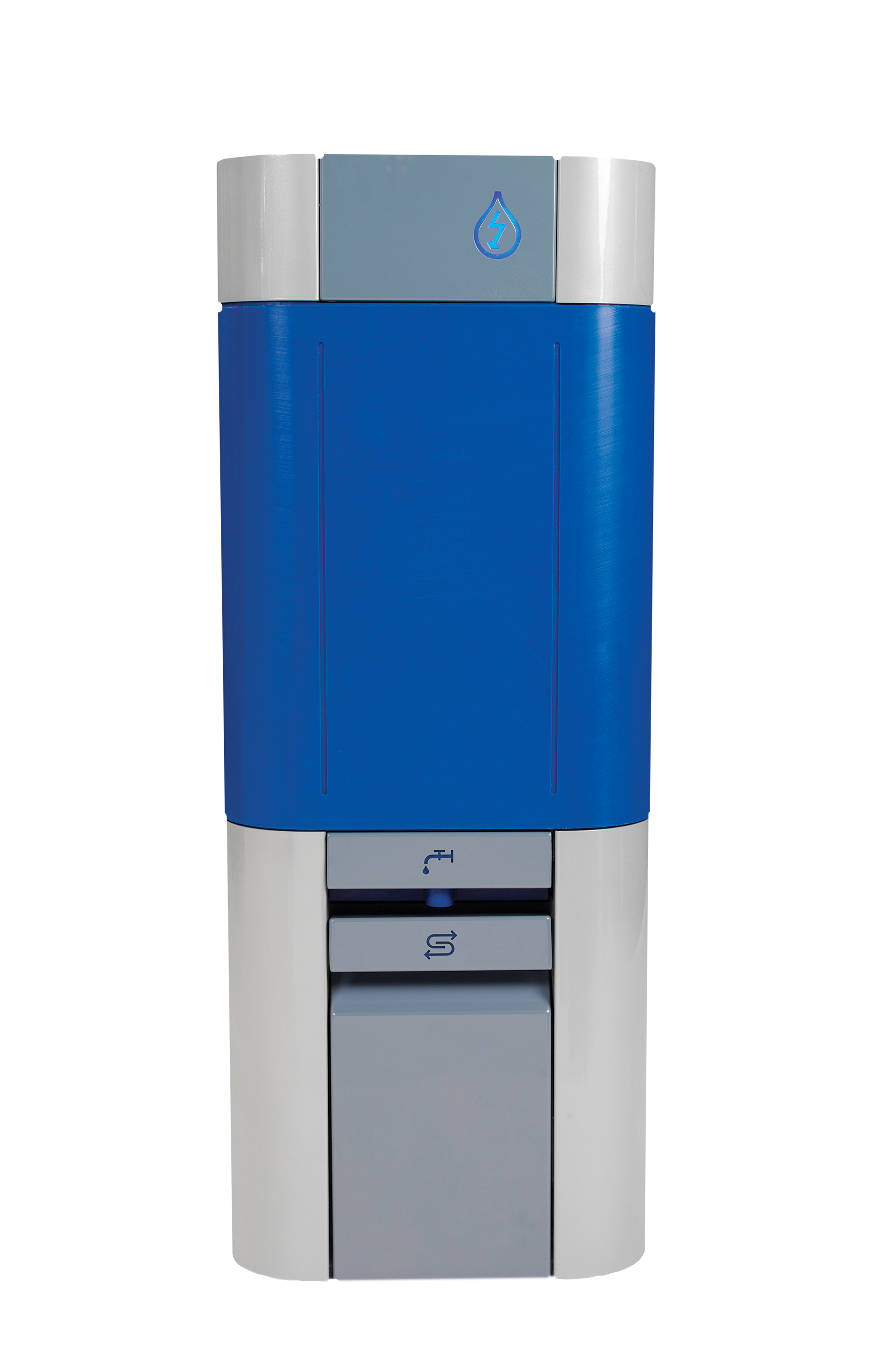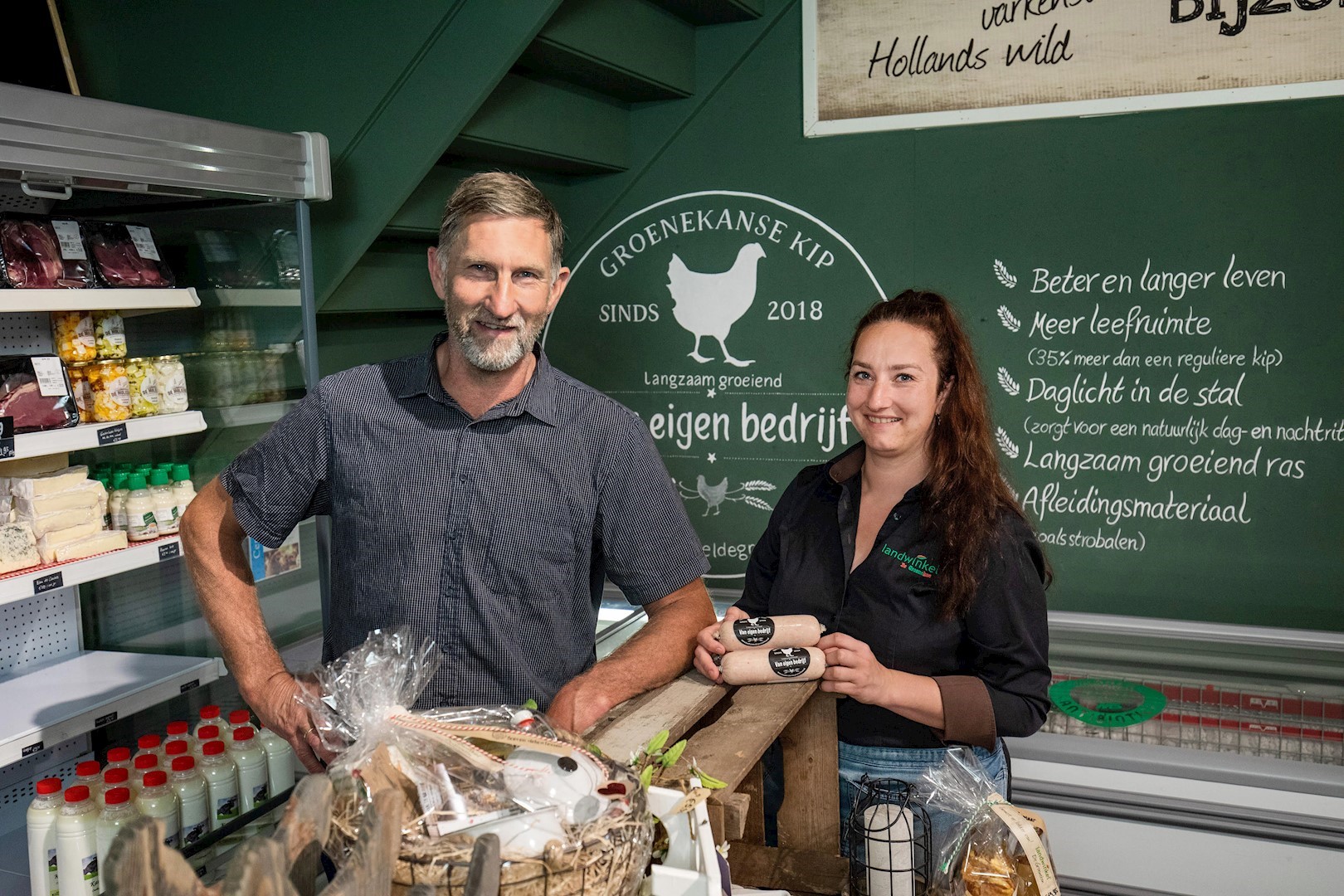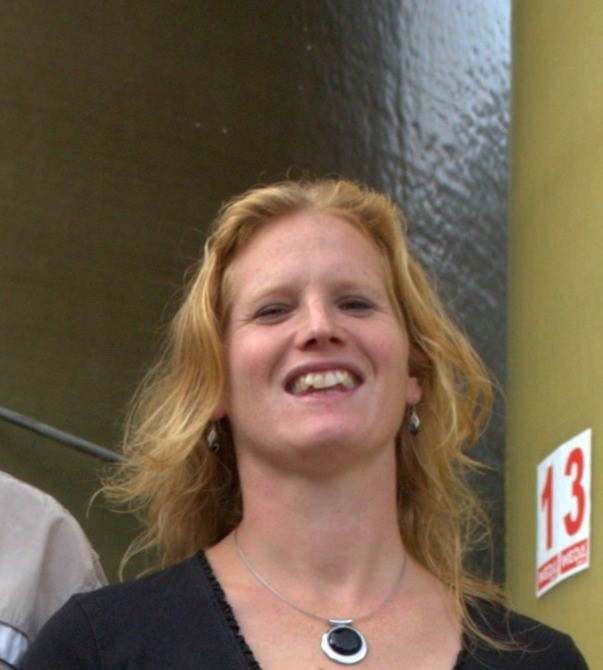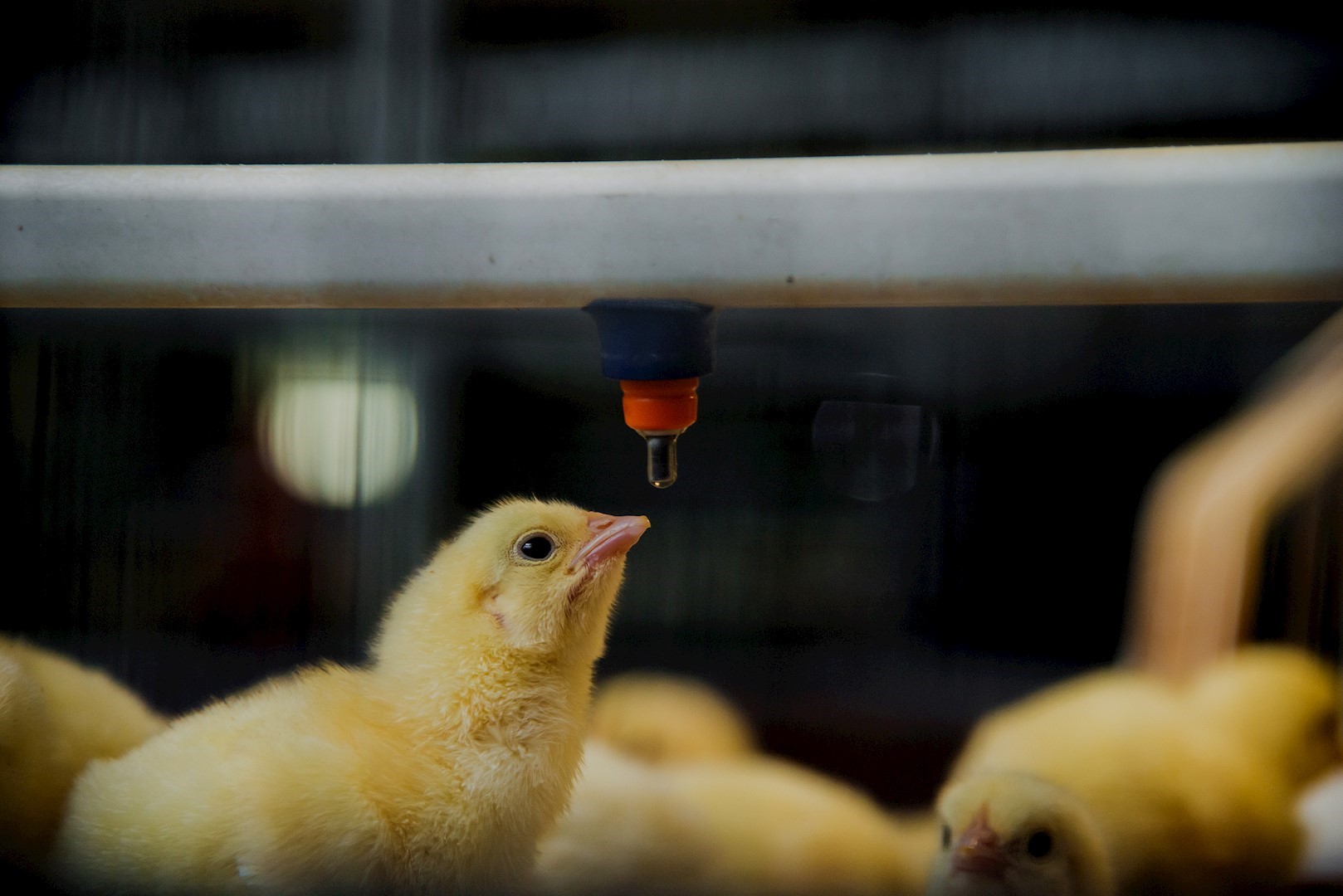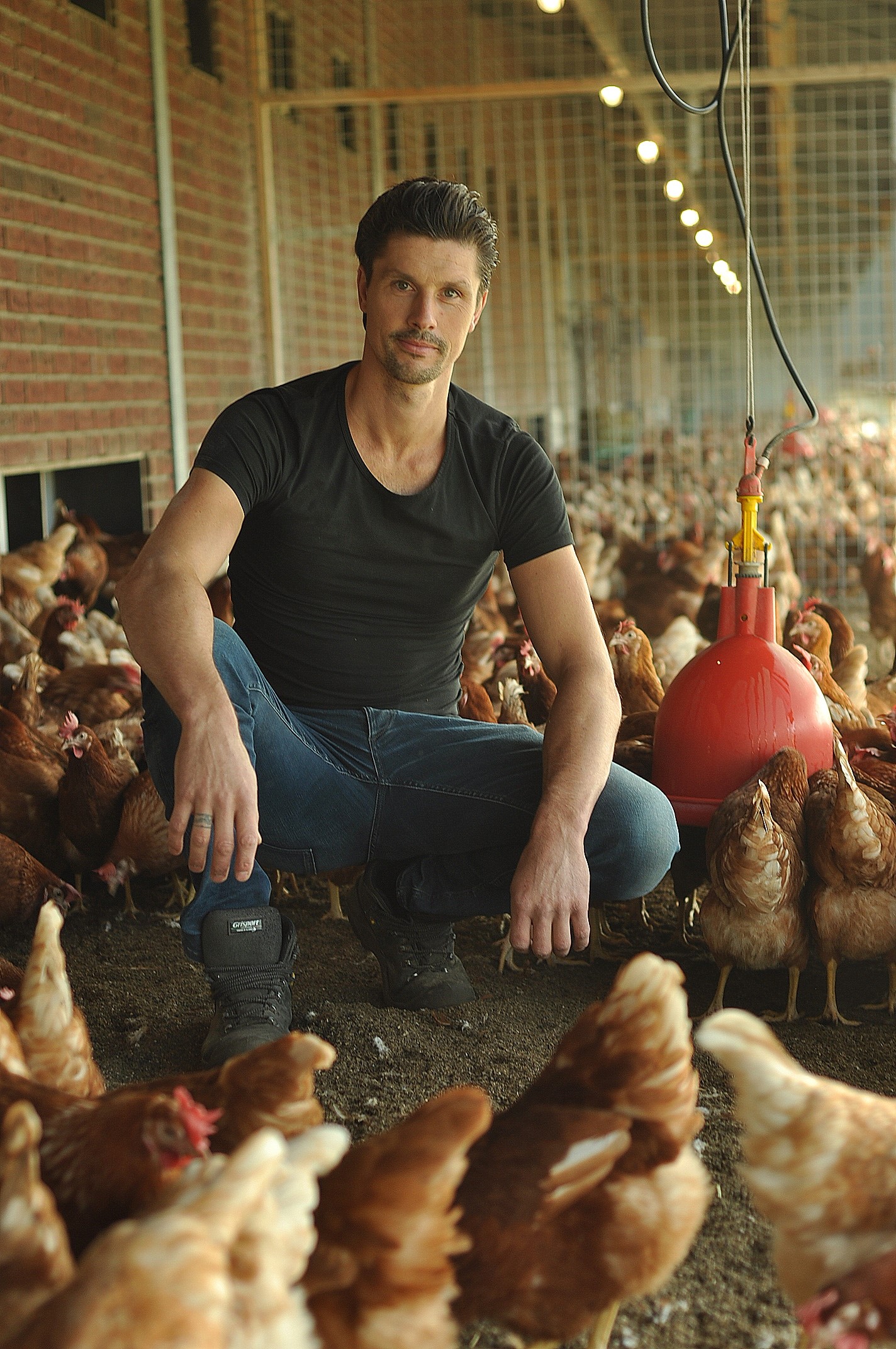Clean drinking water for chickens
Certainty about the drinking water of your broilers, laying hens and breeders
Are you sure that the water your chickens are drinking is of optimal quality? Drinking water and biofilm are more often than previously thought the basis for inexplicable outbreaks of, for example, E. coli and Salmonella. In addition, clean water is the basis for good feed intake, growth and the prevention of unnecessary loss.
Watter has been the expert in drinking water on poultry farms for over ten years. We are the only company in the Netherlands to offer a structural solution for clean water up to and including the nipple, without having to use expensive and toxic additives such as acid, hydrogen peroxide or chlorine (dioxide).
Ensure yourself of safe and 100% clean drinking water with the guarantee from Watter. Let us inform you about the benefits for your company.
Frequently asked questions about drinkingwater for chickens
Chickens are known as omnivores, which is why many questions arise not only about their food, but also their drinking water. To share the knowledge with you, here are frequently asked questions about poultry and the drinking water of chickens
- Does clean water flow from my nipples?
- Why does tap water or a good source not provide security?
- What do they mean by: you don't have to be sick to get better?
- How do I remove biofilm?
- How does polluted water ruin feed intake?
- How does Water guarantee safe and 100% clean water?
- Does good water also mean a better return?
- Is tap water better or source water?
- Can chickens taste if the water is tasty or not?
- Is clear water also clean water?
- What effect can polluted water have on a chicken?
- Are chemicals safe for animals?
- Where is the best place to measure the water?
- What are the known bacteria for water?
Answers to questions about drinking water chickens
1. Does clean water flow from my nipples?
Your chickens drink from the nipple. The water should therefore be clean at that spot. Have you ever taken water samples at the place where the animals drink? Then take a good look at the results: the drinking water is approved if it contains less than 10,000 bacteria per millilitre, but that is not necessarily clean. If a large proportion of these are pathogens, such as E. coli or Salmonella, this is a real drain on health.
2. Why does tap water or a good source not provide security?
Clean water flowing into your farm still has a long way to go until it reaches your animals. Think buffer and break tanks, high temperatures, pressure differentials and additives such as drugs and minerals. These promote biofilm growth in even the best water. Only the quality of the water at the watering place matters.
3. What do they mean by: you don't have to be sick to get better?
Even healthy poultry suffers from contaminated water. Germs in the water are foreign to the body and have to be cleared by the chicken's immune system. This costs an unnecessary amount of energy. Energy that chickens have to get from feed and thus are not using for growth.
4. How do I remove biofilm?
Biofilm is a slime layer of bacteria, fungi and nutrients that builds up in pipes. To remove biofilm properly, it is necessary to eliminate the micro-organisms. With Watter, you can be sure that biofilm will be safely eliminated from your pipes and prevented from rebuilding. Flushing pipes will only move the problem and using chemicals can negatively affect the health of your animals.
5. How does polluted water ruin feeding intake
A large part of your costs and labour is in your poultry's feed. However, drinking water accounts for twice as much of the ration. Clean water ensures that feed is better utilised by the chickens and at the same time energy is not wasted on the immune system.
6. How does Water guarantee safe and 100% clean water?
As an LTO member, you can enjoy extra benefits. In fact, Watter is the exclusive partner of TLO member benefit to take drinking water in livestock farming to the next level. Johan Schuitemaker of LTO says: "Besides animal health, environment is an important issue in livestock farming. As far as we are concerned, Watter therefore fits well into our vision. To take drinking water in livestock farming to a higher level. Johan Schuitemaker of LTO says: "Besides animal health, environment is an important theme in livestock farming. Watter therefore fits well into our vision as far as we are concerned.
7. Does good water also mean a better return?
Research shows that health and production increases when water is completely free of bacteria. This eliminates the need to waste energy on defences, which benefits production. According to the GD, contaminated water costs €16,000 a year for a farm with 40,000 laying hens. A good approach to water quality is important for both the animals and the bottom line.
8. Is tap water better or source water?
The choice of well water is often a financial one, but how cost-effective is it? The savings are often negated by excess iron, manganese or methane and the necessary purchase of a de-ironer, aerator, etc. Importantly, what matters is not the origin of the water, but the quality in the trough. Water quality deteriorates quickly in the barn. Even with tap water.
9. Can chickens taste if the water is tasty or not?
Chickens know very well where in the house there is good water to be had. Water quality is determined by chemistry and microbiology and this can also affect flavour. Poultry farmers often use chemicals against bacteria, but these do not clean up everything, such as mould and biofilm. Removing all contamination improves the palatability of the water, so chickens drink more and cleaner water.
10. Is clear water also clean water?
Bacteria cannot be seen with the naked eye. So clear water is not necessarily clean. Taking a water sample at the drinking nipple tells you what the hen is really drinking. Germ growth happens in every house: buffer tanks, PVC or tylene pipes and feed residues contribute to this. This does not mean that contamination such as biofilm is part of it. With the right approach, you can ensure that the water in the trough becomes and stays germ-free.
11. What effect can polluted water have on a chicken?
Polluted water also makes the animals more susceptible to diseases outside the water. The infection pressure on their health increases and may even lead to an increase in indirect health problems, such as leg problems.
12. Are chemicals safe for animals?
Chemicals are not always safe for humans and animals and do not properly address biofilm. By using the Watter system, you can continuously keep the water clean. This benefits water quality, safety and your wallet!
13. Where is the best place to measure the water?
A measurement at the source says nothing about the water the chickens drink. Therefore, always measure from the drinking nipple or the drinking bowl. Only then will you know what the chickens are really drinking.
14. What are the known bacteria in water?
Pathogens that can be in the water include E. coli, Salmonella and Legionella. With the Watter system, you achieve perfect water quality. As a result, you guarantee the absence of these germs!




